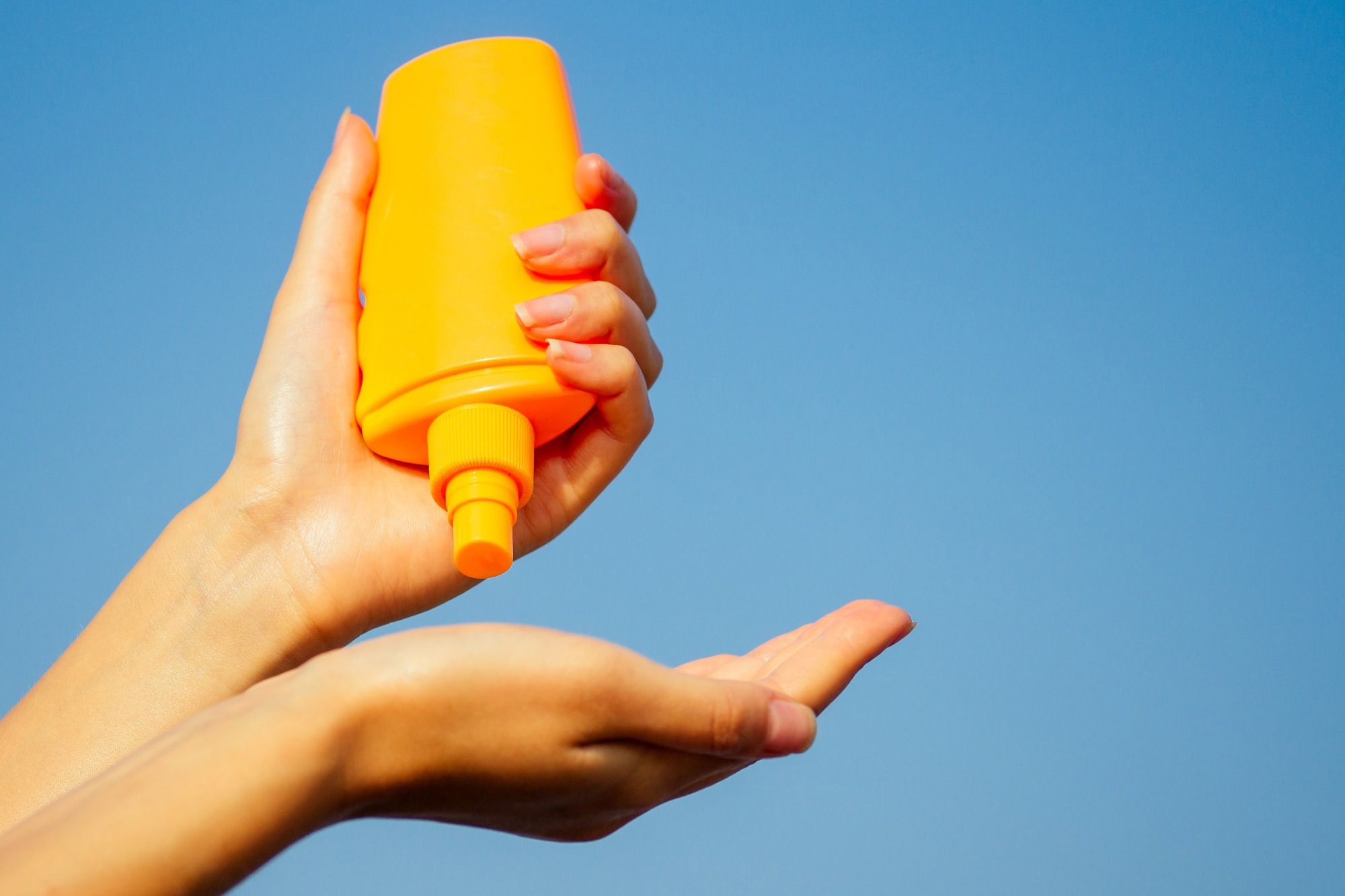Reviewed by Alex SmithDec 5 2022
Microplastics, little plastic fragments less than 5 mm in length, are becoming a common environmental hazard. According to studies, these tiny pieces are potentially dangerous, and it is unknown what effect they might have on pollutants that cling to them.
 Sunscreens contain compounds that could interact with microplastics and other pollutants, potentially making them more harmful. Image Credit: yurakrasil/shutterstock
Sunscreens contain compounds that could interact with microplastics and other pollutants, potentially making them more harmful. Image Credit: yurakrasil/shutterstock
Researchers report in the journal Environmental Science & Technology Letters that UV filters used in items such as sunscreens can make chromium metal more hazardous when bonded to microplastics.
As microplastics can gather other environmental toxins, such as heavy metals or organic molecules, on their surfaces, they may pose a much greater threat to wildlife, plants, and humans than previously imagined.
According to a previous study, heavy metals can quickly bond to microplastics, and this combination can harm aquatic life. However, microplastics and the cocktail of substances on them may interact with one another, modifying their chemical properties in addition to adhering to other contaminants.
Certain metals, like chromium (Cr), may exhibit distinct oxidation states on the surfaces of microplastics. Furthermore, while Cr(III) is reasonably safe, Cr(VI) is hazardous. For the first time, Kelvin Sze-Yin Leung and coworkers wanted to explore how the oxidation state of Cr changes when attached to microplastics and how this is altered by a common organic contaminant: UV filter molecules.
The scientists mixed Cr and polystyrene microplastic particles with and without benzophenone-type UV filters. The researchers discovered that microplastics might agglomerate even more Cr in the presence of a UV filter. Furthermore, the oxidation states of Cr in the mixes, including the filters, were greater.
Furthermore, the researchers investigated whether this enhanced oxidation state translated into environmental toxicity in a microalgae population. When the microalgae were exposed to the mixture containing the filter molecule, their growth was hindered, indicating that Cr was now in its more hazardous form. This suggests, according to the researchers, that microplastics can aid in the transformation of pollutants into a more dangerous form—a previously unknown interaction.
The study received financial support from the Hong Kong Research Grants Council and the Hong Kong Baptist University Seed Fund.
Journal Reference:
Ho, W.-K., et al. (2022) Sorption Behavior, Speciation, and Toxicity of Microplastic-Bound Chromium in Multisolute Systems. Environmental Science & Technology Letters. doi.org/10.1021/acs.estlett.2c00689.